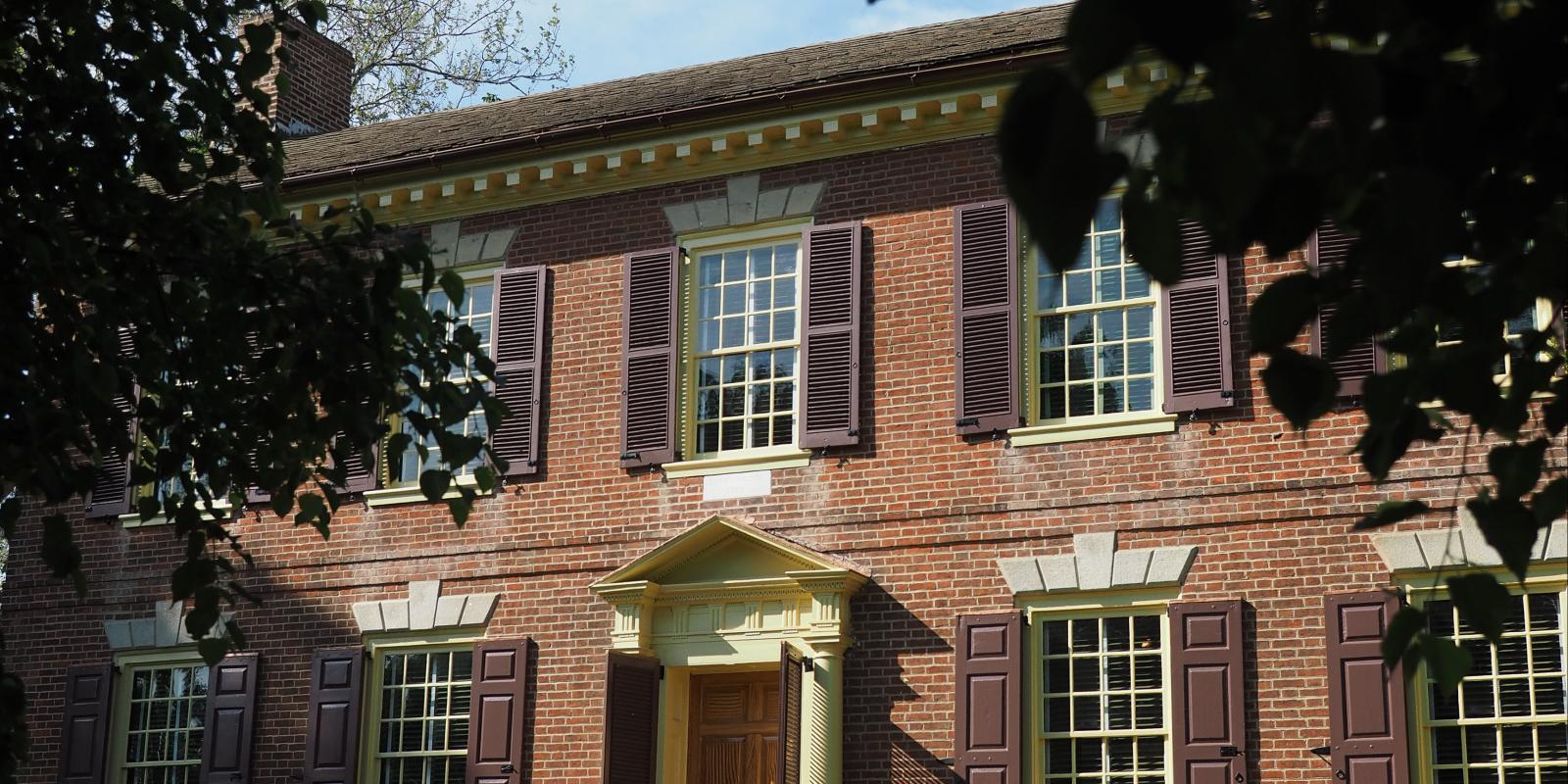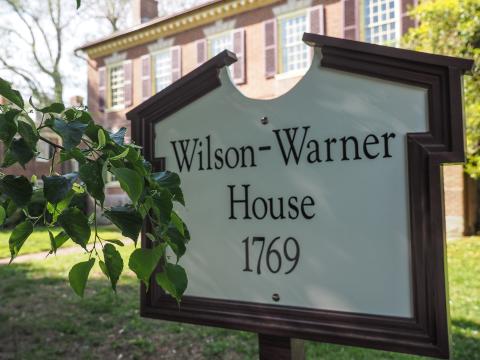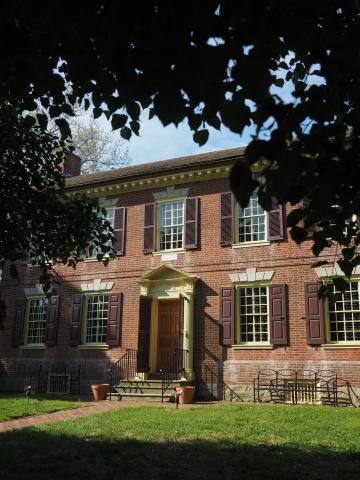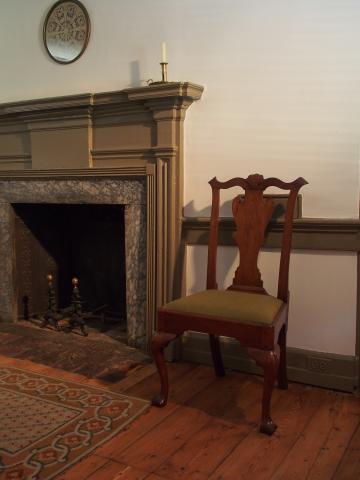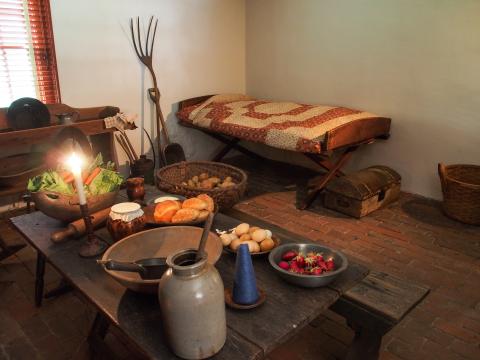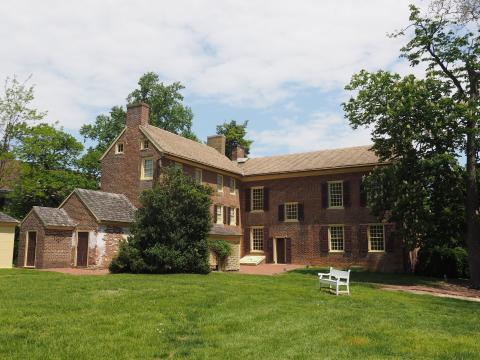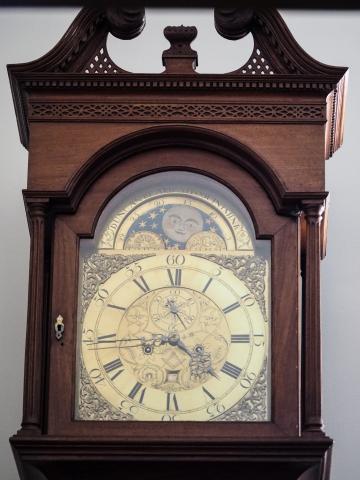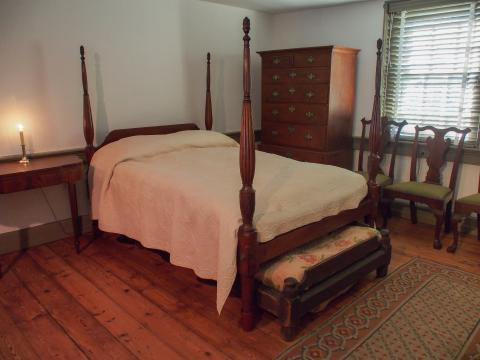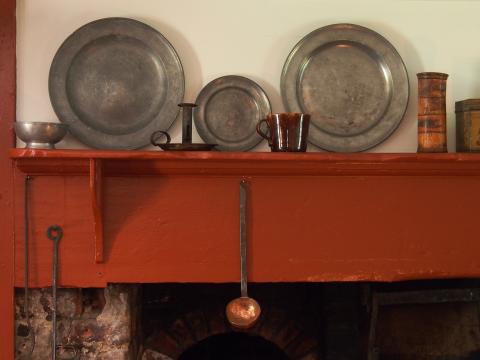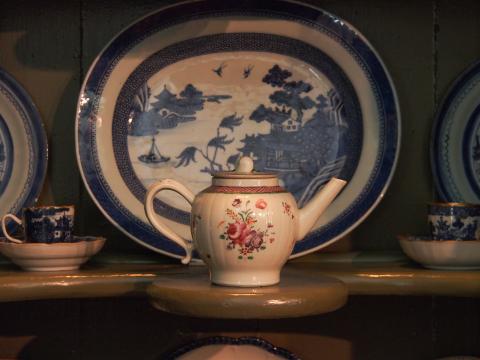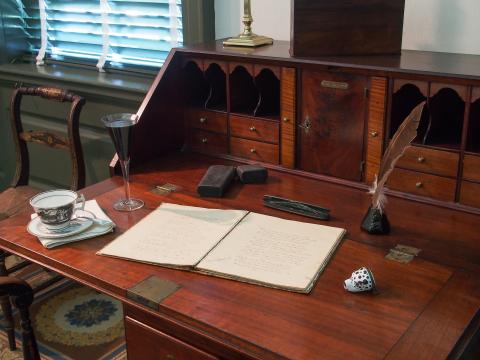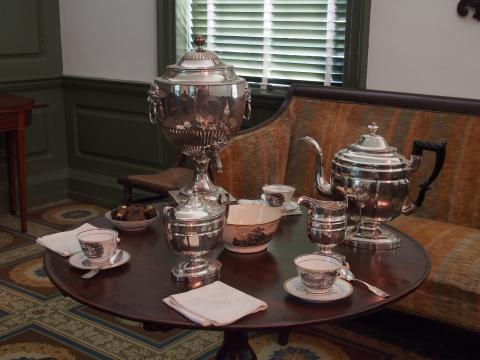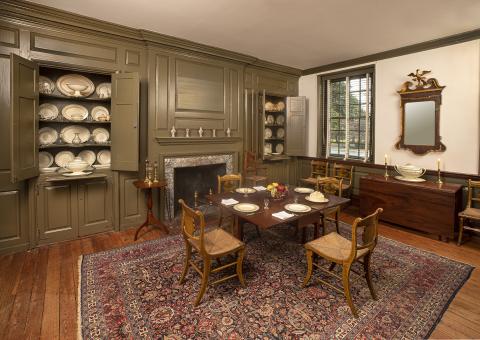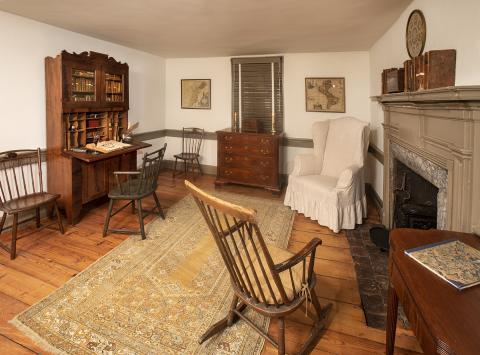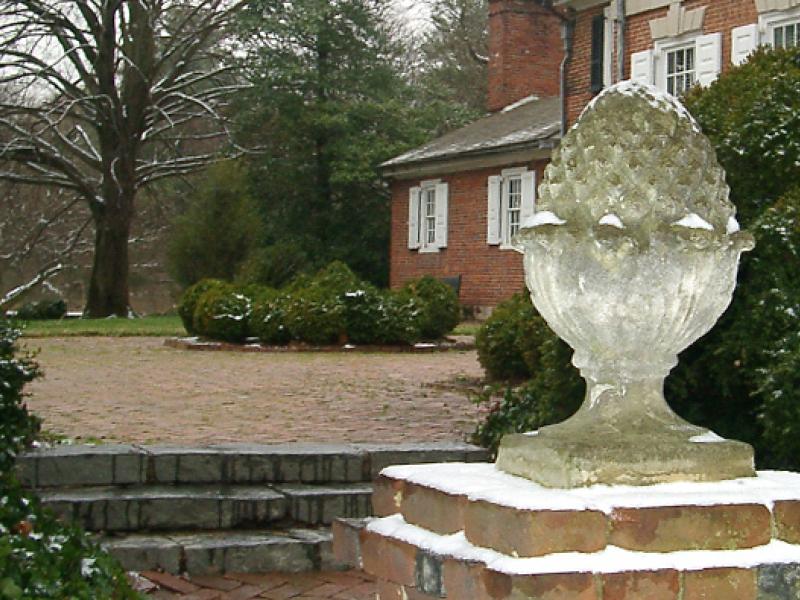Next door to the Corbit-Sharp House on Main Street is the Wilson-Warner House, another Georgian house built c. 1769. While the Corbit-Sharp home today excites the imagination with images of intimate parties and formal elegance, the Wilson-Warner residence next door projects a more restrained feeling.
It’s exterior shares the Georgian formality of the Corbit-Sharp House but does not appear as ostentatious because of the floor plan and simpler architectural detail. Its house style is more representative of local building practices.
The Wilson-Warner House was constructed in the Delaware-Georgian style to affirm owner David Wilson's status as the town's most prosperous merchant. Sadly, the home would be sold at an 1829 bankruptcy auction when his namesake lost his fortune and moved his family to Indiana.
David Jr.’s daughter Mary Wilson grew up in the house until she was 18 years old. She would go on to marry her next-door neighbor Daniel Corbit, the man who kept meticulous records of the Corbit family history, inventory and building plans.
In 1901 Daniel and Mary’s daughter, Mary Warner, bought and restored the house that her great-grandfather built and her mother grew up in. It opened as a museum in 1924 — years before Delaware preservationist H. Rodney Sharp bought the neighboring Corbit-Sharp House. Today it’s named Wilson-Warner House for David Wilson, who built it, and Mary Warner, who restored it.
Fortunately for the preservation of the home, the bankruptcy of David Wilson, Jr. in 1828 produced multiple documents about the furnishings that provide an amazingly detailed picture of the contents of each room of the house.
